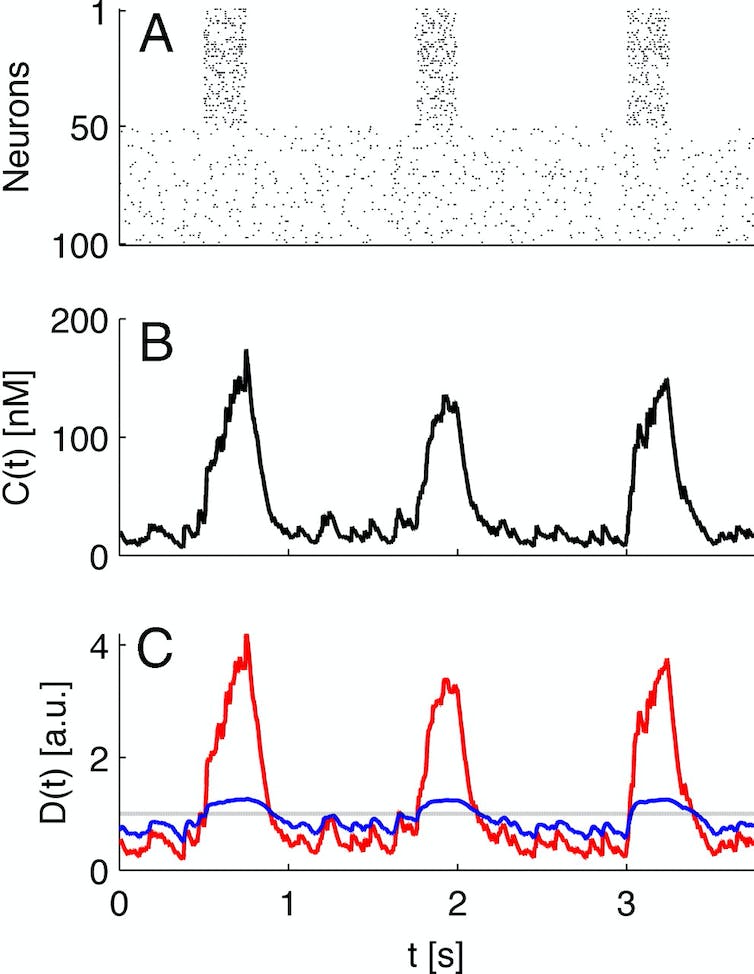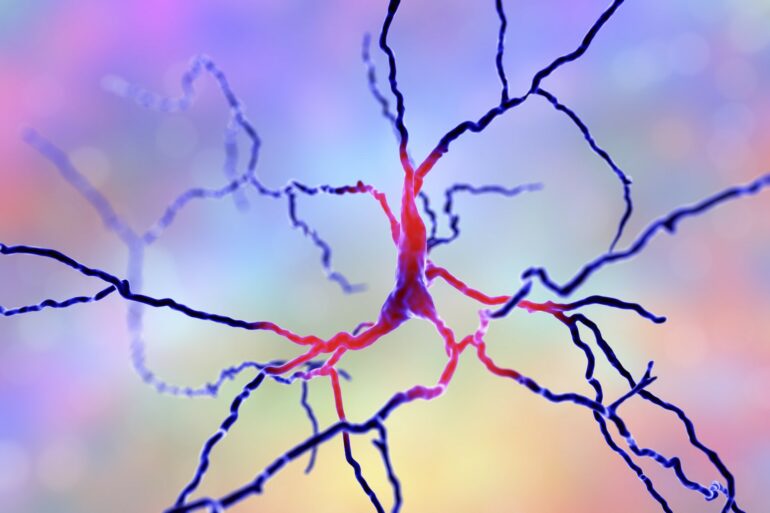Dopamine seems to be having a moment in the zeitgeist. You may have read about it in the news, seen viral social media posts about “dopamine hacking” or listened to podcasts about how to harness what this molecule is doing in your brain to improve your mood and productivity. But recent neuroscience research suggests that popular strategies to control dopamine are based on an overly narrow view of how it functions.
Dopamine is one of the brain’s neurotransmitters – tiny molecules that act as messengers between neurons. It is known for its role in tracking your reaction to rewards such as food, sex, money or answering a question correctly. There are many kinds of dopamine neurons located in the uppermost region of the brainstem that manufacture and release dopamine throughout the brain. Whether neuron type affects the function of the dopamine it produces has been an open question.
Recently published research reports a relationship between neuron type and dopamine function, and one type of dopamine neuron has an unexpected function that will likely reshape how scientists, clinicians and the public understand this neurotransmitter.
Dopamine is involved with more than just pleasure.
Dopamine neuron firing
Dopamine is famous for the role it plays in reward processing, an idea that dates back at least 50 years. Dopamine neurons monitor the difference between the rewards you thought you would get from a behavior and what you actually got. Neuroscientists call this difference a reward prediction error.
Eating dinner at a restaurant that just opened and looks likely to be nothing special shows reward prediction errors in action. If your meal is very good, that results in a positive reward prediction error, and you are likely to return and order the same meal in the future. Each time you return, the reward prediction error shrinks until it eventually reaches zero when you fully expect a delicious dinner. But if your first meal was terrible, that results in a negative reward prediction error, and you probably won’t go back to the restaurant.
Dopamine neurons communicate reward prediction errors to the brain through their firing rates and patterns of dopamine release, which the brain uses for learning. They fire in two ways.
Phasic firing refers to rapid bursts that cause a short-term peak in dopamine. This happens when you receive an unexpected reward or more rewards than anticipated, like if your server offers you a free dessert or includes a nice note and smiley face on your check. Phasic firing encodes reward prediction errors.
By contrast, tonic firing describes the slow and steady activity of these neurons when there are no surprises; it is background activity interspersed with phasic bursts. Phasic firing is like mountain peaks, and tonic firing is the valley floors between peaks.




